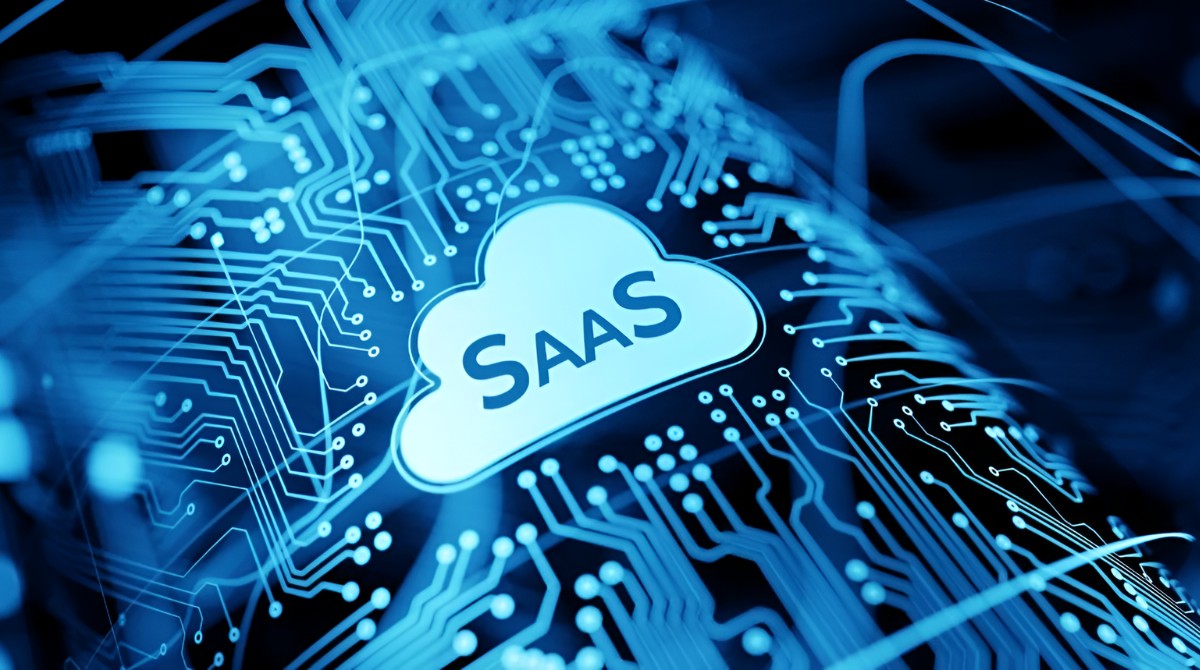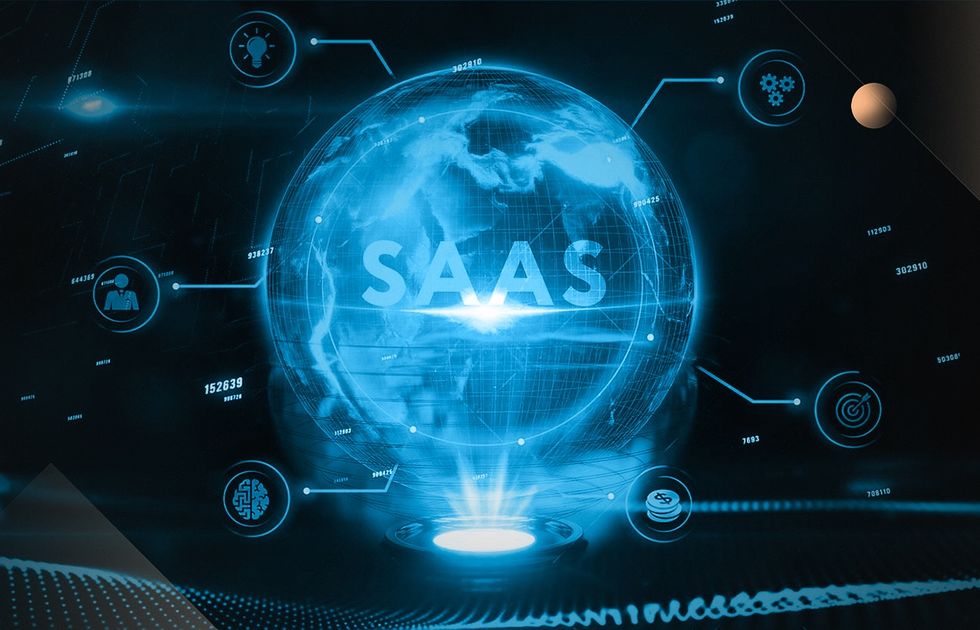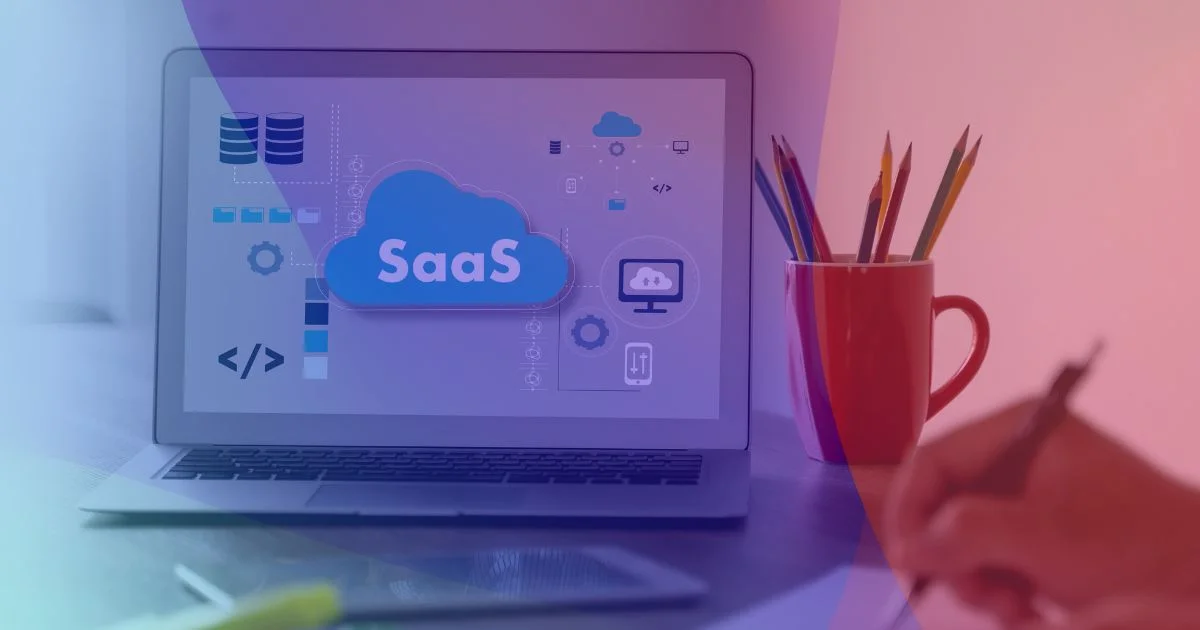Introduction
Welcome to the world of software as a service (SaaS) platforms! In today’s digital age, businesses are increasingly turning to SaaS platforms as a convenient and cost-effective solution for their software needs. But what exactly sets a SaaS platform apart from regular software applications? In this article, we will explore the distinctive features and benefits of SaaS platforms, as well as the key differences they have compared to traditional software applications.
First and foremost, let’s define what exactly a SaaS platform is. SaaS is a cloud-based software delivery model where users can access and use applications via the internet, without the need for on-premises installation or infrastructure. Unlike traditional software applications, which are typically purchased and installed on individual computers or servers, SaaS platforms are centrally hosted, maintained, and managed by the service provider. This means that users can access the platform anytime, anywhere, as long as they have an internet connection and a compatible device.
So, what sets SaaS platforms apart from regular software applications? There are several key characteristics that distinguish SaaS platforms:
- Subscription-based pricing: SaaS platforms are usually offered on a subscription basis, where users pay a recurring fee to access and use the platform. This provides businesses with a more predictable and manageable cost structure, as they don’t have to make a large upfront investment in software licenses.
- Scalability and flexibility: SaaS platforms are designed to easily scale up or down based on the needs of the business. This flexibility allows businesses to add or remove users, as well as to adjust their feature requirements, as their needs evolve over time.
- Automatic updates and maintenance: With SaaS platforms, the service provider takes care of all software updates and maintenance tasks. This ensures that users always have access to the latest features and bug fixes without having to go through the hassle of manual updates.
- Multi-tenant architecture: SaaS platforms are built on a multi-tenant architecture, meaning that multiple users and organizations can share the same infrastructure and resources. This allows for efficient resource utilization and cost savings, as the provider can spread the infrastructure costs across multiple customers.
Now that we’ve covered the distinctive features of SaaS platforms, let’s explore the benefits they offer to businesses. Stay tuned for the next section!
Definition of SaaS Platform
A software as a service (SaaS) platform is a cloud-based software delivery model that provides users with access to software applications over the internet. Unlike traditional software applications, which require installation and maintenance on individual devices or servers, SaaS platforms are hosted and managed by a service provider, allowing users to access the platform via a web browser or mobile application.
At its core, a SaaS platform is designed to offer a wide range of software functionalities and services to businesses and individuals, without the need for costly upfront investments in infrastructure or licensing fees. Users can simply subscribe to the platform and gain immediate access to the software, often on a pay-as-you-go or monthly subscription basis.
SaaS platforms are typically built with a multi-tenant architecture, which allows multiple users or organizations to share the same software infrastructure. This shared infrastructure enables efficient resource utilization and cost savings for both the service provider and the users.
One of the defining characteristics of a SaaS platform is its accessibility. Users can access the platform from any device with an internet connection, making it highly flexible and convenient. This remote accessibility is particularly beneficial for businesses with distributed teams or remote workforce, as it ensures that everyone can access the software and collaborate seamlessly, regardless of their location.
SaaS platforms offer a wide range of applications and services, catering to various industries and business needs. From customer relationship management (CRM) software to project management tools, accounting software, and collaboration platforms, there is a plethora of SaaS offerings available to meet the diverse requirements of businesses.
Moreover, SaaS platforms are continuously evolving and improving. Service providers regularly release updates and enhancements to their platforms, ensuring that users have access to the latest features, security patches, and bug fixes. This eliminates the need for users to manually update and maintain the software, relieving them of the associated time and effort.
In summary, a SaaS platform is a cloud-based software delivery model that provides users with access to software applications and services over the internet. With its flexible accessibility, cost-effective subscription-based pricing, and constant updates and enhancements, SaaS platforms have become a popular choice for businesses of all sizes and industries.
Key Characteristics of SaaS Platforms
SaaS (Software as a Service) platforms have several key characteristics that set them apart from traditional software applications. Understanding these characteristics can help businesses make informed decisions when considering adopting a SaaS platform. Let’s explore the key characteristics of SaaS platforms:
- Cloud-based delivery: SaaS platforms are hosted on the cloud, which means users can access them remotely via the internet. This eliminates the need for on-premises installation and maintenance, allowing businesses to save on infrastructure costs and easily scale their operations.
- Subscription-based pricing: Unlike traditional software that requires a one-time purchase, SaaS platforms are typically offered on a subscription basis. Users pay a recurring fee to access and use the platform, which makes the costs more predictable and manageable for businesses.
- Ease of setup and use: SaaS platforms are designed to be user-friendly and easy to set up. Users can typically get started with minimal technical expertise and without the need for extensive training. This quick setup and usability make SaaS platforms accessible to businesses of all sizes and technical backgrounds.
- Scalability and flexibility: SaaS platforms offer scalability and flexibility, allowing businesses to easily adjust their usage based on their needs. Whether it’s adding or removing users, upgrading or downgrading features, or expanding to new markets, SaaS platforms can adapt to the changing demands of a business without requiring significant upfront investments.
- Automatic updates and maintenance: With SaaS platforms, service providers handle all the software updates and maintenance tasks. This ensures that users always have access to the latest features and security patches, without the hassle of manual updates. It also relieves businesses from the burden of maintaining and managing the software infrastructure.
- High level of security: SaaS platforms prioritize security, employing robust measures to protect user data. Service providers invest in state-of-the-art security protocols, encryption techniques, and regular vulnerability assessments to ensure the confidentiality and integrity of data stored on their platforms.
These characteristics make SaaS platforms an attractive option for businesses looking to streamline their operations and reduce IT overhead. The cloud-based nature, coupled with the flexibility, scalability, and ease of use, offers businesses the opportunity to leverage powerful software applications without the need for extensive resources or technical expertise.
As businesses increasingly realize the benefits of SaaS platforms, the market continues to expand with a wide variety of offerings. From customer relationship management (CRM) platforms to project management tools, accounting software, and collaboration platforms, businesses can find SaaS solutions that cater specifically to their industry and requirements.
Next, let’s delve into the benefits that SaaS platforms offer to businesses, which further illustrate why they have gained so much popularity in recent years.
Benefits of Using a SaaS Platform
Using a SaaS (Software as a Service) platform offers numerous benefits to businesses of all sizes and industries. These benefits contribute to the rising popularity of SaaS platforms as a cost-effective and efficient solution for software needs. Let’s explore some of the key benefits of using a SaaS platform:
- Cost-effectiveness: One of the major advantages of a SaaS platform is its cost-effectiveness. Rather than investing in expensive software licenses and hardware infrastructure, businesses can subscribe to a SaaS platform on a pay-as-you-go basis. This eliminates the need for upfront expenditures and allows businesses to allocate their resources more efficiently.
- Easy and quick setup: SaaS platforms are designed to be user-friendly and require minimal setup time. Businesses can get up and running with a SaaS platform much faster compared to traditional software applications that require installation, configuration, and customization.
- Seamless and automatic updates: Service providers of SaaS platforms handle all software updates and maintenance tasks. This means that businesses always have access to the latest features, performance improvements, and security patches without any effort on their part. This eliminates the need for businesses to allocate IT resources to manage updates, allowing them to focus on their core operations.
- Scalability and flexibility: SaaS platforms offer scalability and flexibility to meet the changing needs of businesses. Whether a business needs to add more users, upgrade features, or expand to new markets, SaaS platforms can easily accommodate these changes without disrupting operations or requiring significant investments.
- Accessibility and collaboration: With SaaS platforms, users can access the software from any device with an internet connection. This enables businesses with remote teams or multiple office locations to collaborate seamlessly, regardless of geographic boundaries. Real-time data synchronization and shared access to resources mean that employees can work together efficiently, enhancing productivity.
- High level of security: Service providers of SaaS platforms prioritize the security of user data. They invest in robust security measures, such as data encryption, firewall protection, and regular security audits, to ensure the confidentiality and integrity of sensitive information. This alleviates the security concerns that businesses may have when storing data on their own infrastructure.
These benefits make SaaS platforms an attractive solution for businesses seeking cost-effective, scalable, and efficient software solutions. By leveraging the power of the cloud and outsourcing software management tasks to the service provider, businesses can focus on their core activities and allocate their resources more strategically.
Next, we will delve into the key differences between SaaS platforms and regular software applications, highlighting why businesses may choose one over the other.
Differences Between SaaS Platforms and Regular Software Applications
SaaS (Software as a Service) platforms differ from regular software applications in several key aspects. Understanding these differences can help businesses make informed decisions when choosing between the two. Let’s explore the main distinctions between SaaS platforms and regular software applications:
- Deployment: SaaS platforms are cloud-based, which means they are accessed over the internet, without the need for installation on individual devices. In contrast, regular software applications require installation and often rely on local servers or hardware infrastructure.
- Licensing: SaaS platforms are typically offered on a subscription basis, where businesses pay a recurring fee to access and use the software. On the other hand, regular software applications are typically purchased with a one-time license fee, and businesses usually own the software outright.
- Cost structure: The cost structure of SaaS platforms is usually based on a monthly or annual subscription fee. This makes the costs predictable and allows businesses to scale their usage as needed. In contrast, regular software applications often involve higher upfront costs, as businesses need to purchase licenses for each user or device.
- Updates and maintenance: SaaS platforms handle all software updates and maintenance tasks, ensuring that users have access to the latest features and security patches without any effort on their part. Regular software applications require manual updates and maintenance by the users or IT teams.
- Customization: SaaS platforms offer a certain level of customization, allowing businesses to tailor the software to their specific needs. However, this customization is often limited compared to regular software applications, which provide more extensive options for customization and integration with other systems.
- Scalability and flexibility: SaaS platforms are designed to be highly scalable and flexible, allowing businesses to easily add or remove users, adjust feature requirements, and expand their operations. Regular software applications require additional licenses or hardware upgrades to scale, which can be more costly and time-consuming.
- Data security: With SaaS platforms, the responsibility for data security lies with the service provider. They implement stringent security measures to protect user data. In the case of regular software applications, businesses are responsible for implementing their own security measures and ensuring data protection.
These differences make SaaS platforms a popular choice for businesses looking for cost-effective, scalable, and low-maintenance software solutions. The cloud-based nature, coupled with the subscription-based pricing and automatic updates, brings numerous advantages to businesses of all sizes and industries.
However, it’s important to note that regular software applications still have their place, particularly for organizations with specific customization and integration requirements or highly sensitive data that requires strict control. In such cases, the flexibility and customization options offered by regular software applications may outweigh the benefits of a SaaS platform.
Next, we will dive into the considerations that businesses should keep in mind when choosing a SaaS platform.
Considerations when Choosing a SaaS Platform
Choosing the right SaaS (Software as a Service) platform is crucial for businesses as it can greatly impact their operations and overall success. When evaluating different SaaS platforms, there are several key considerations that businesses should keep in mind. Let’s explore these considerations:
- Features and functionality: Assess the features and functionality offered by the SaaS platform and determine if they align with your business needs. Consider specific requirements and workflows to ensure that the platform can handle the tasks you need it to perform.
- Integration capabilities: Evaluate the platform’s integration capabilities, especially if you have existing systems or applications that need to seamlessly integrate with the SaaS platform. Look for APIs, connectors, or pre-built integrations that can streamline workflows and data sharing.
- Data security and compliance: Consider the security measures implemented by the SaaS platform provider to protect your data. Ensure they have robust security protocols, data encryption, and regular security audits. Additionally, if your business operates in a regulated industry, ensure that the platform complies with relevant data privacy and security regulations.
- Scalability and flexibility: Assess the scalability and flexibility of the SaaS platform to accommodate your business’s growth and changing needs. Determine if the platform allows you to easily add or remove users, adjust features, and expand or contract your usage as required.
- Reliability and uptime: Look into the platform’s reliability and uptime track record. Consider factors such as the provider’s service level agreements (SLAs), historical uptime performance, and any backup and disaster recovery policies in place. Ensuring a reliable platform is critical to avoid disruptions to your business operations.
- User experience and usability: Evaluate the user experience and usability of the platform. Consider factors such as the platform’s interface, intuitiveness, and ease of use. A user-friendly platform will help maximize user adoption and minimize training or onboarding requirements.
- Customer support and service: Assess the level of customer support and service offered by the provider. Look for options such as 24/7 support, dedicated account managers, and a comprehensive knowledge base or community forum. Good customer support ensures that you can quickly resolve any issues or concerns that may arise.
- Costs and pricing structure: Analyze the costs associated with the SaaS platform, including upfront costs, subscription fees, and any additional charges for extra users or features. Compare the pricing structure of different providers and consider the overall value and return on investment that the platform can provide.
By carefully considering these factors, businesses can make an informed decision and select a SaaS platform that aligns with their needs, goals, and budget. It’s important to thoroughly evaluate different platforms, take advantage of free trials or demos, and seek input from key stakeholders before making a final decision.
Next, let’s explore some examples of popular SaaS platforms in the market today.
Examples of Popular SaaS Platforms
The SaaS (Software as a Service) market offers a wide range of platforms that cater to different business needs and industries. Let’s explore some examples of popular SaaS platforms that businesses can consider:
- Salesforce: Salesforce is a leading CRM (Customer Relationship Management) SaaS platform that helps businesses manage their customer interactions, sales processes, and marketing campaigns. It offers a comprehensive set of features, including lead management, opportunity tracking, email marketing, and customer support functionalities.
- Microsoft 365: Microsoft 365 (formerly known as Office 365) is a suite of SaaS platforms that includes familiar tools such as Word, Excel, PowerPoint, and Outlook, along with cloud collaboration and communication services. It enables businesses to work seamlessly across devices and collaborate in real-time with features like document sharing, video conferencing, and team chat.
- Zendesk: Zendesk is a customer service and support SaaS platform that helps businesses manage their customer inquiries, tickets, and support channels. It offers features such as ticket management, live chat, knowledge base management, and analytics to streamline customer support operations and enhance customer satisfaction.
- Slack: Slack is a communication and collaboration SaaS platform that brings teams together, whether they are in the same office or scattered across different locations. It provides real-time messaging, file sharing, and integration capabilities, allowing teams to collaborate effectively and stay organized, ultimately improving productivity and teamwork.
- Xero: Xero is a cloud-based accounting SaaS platform that simplifies financial management for businesses. It offers features for invoicing, expense management, bank reconciliation, and financial reporting. With Xero, businesses can easily track their finances, collaborate with accountants and bookkeepers, and access their accounting data from anywhere.
- Asana: Asana is a project management SaaS platform that helps teams stay organized and collaborate on tasks and projects. It provides features for task management, progress tracking, and team communication, enabling teams to streamline their workflows and effectively manage and prioritize their work.
These are just a few examples of the numerous SaaS platforms available in the market. Depending on your industry and specific requirements, you may find platforms tailored to your needs, whether it’s for human resources, e-commerce, marketing automation, or productivity.
When considering a SaaS platform, it’s important to evaluate the features, scalability, pricing, and integration capabilities of each platform. Additionally, consider reading reviews, seeking recommendations, and conducting thorough research to ensure the chosen platform aligns with your business goals and can support your growth.
Now that we have explored popular SaaS platforms, let’s summarize the key points discussed in this article.
Conclusion
SaaS (Software as a Service) platforms have revolutionized the way businesses access and use software applications. With their cloud-based nature, subscription-based pricing, and automatic updates, SaaS platforms offer numerous advantages over traditional software applications.
In this article, we explored the definition of SaaS platforms and discussed their key characteristics, including cloud-based delivery, subscription-based pricing, automatic updates, and multi-tenancy. We also highlighted the benefits of using a SaaS platform, such as cost-effectiveness, scalability, and ease of use.
We then compared SaaS platforms to regular software applications, emphasizing their differences in areas such as deployment, licensing, cost structure, updates, customization, scalability, and data security. Understanding these differences can help businesses make informed decisions when considering which approach is best for their software needs.
Furthermore, we discussed the considerations that businesses should keep in mind when choosing a SaaS platform, such as features and functionality, integration capabilities, data security, scalability, reliability, user experience, customer support, and pricing structure.
Finally, we provided examples of popular SaaS platforms in the market, such as Salesforce, Microsoft 365, Zendesk, Slack, Xero, and Asana, showcasing the diverse range of platforms available to businesses across various industries.
In conclusion, SaaS platforms offer businesses a cost-effective, scalable, and flexible solution for accessing and utilizing software applications. By leveraging the cloud-based nature of SaaS platforms, businesses can streamline their operations, enhance collaboration, and focus on their core activities while leaving software updates and maintenance to the service providers.
When selecting a SaaS platform, it’s essential to carefully evaluate the features, integration capabilities, data security, reliability, user experience, customer support, and pricing structure of different platforms to ensure the chosen platform aligns with your unique business needs and requirements.
With the ever-expanding SaaS market, businesses have a wide array of options to choose from, enabling them to find the perfect fit for their software needs and contribute to their growth and success.

























